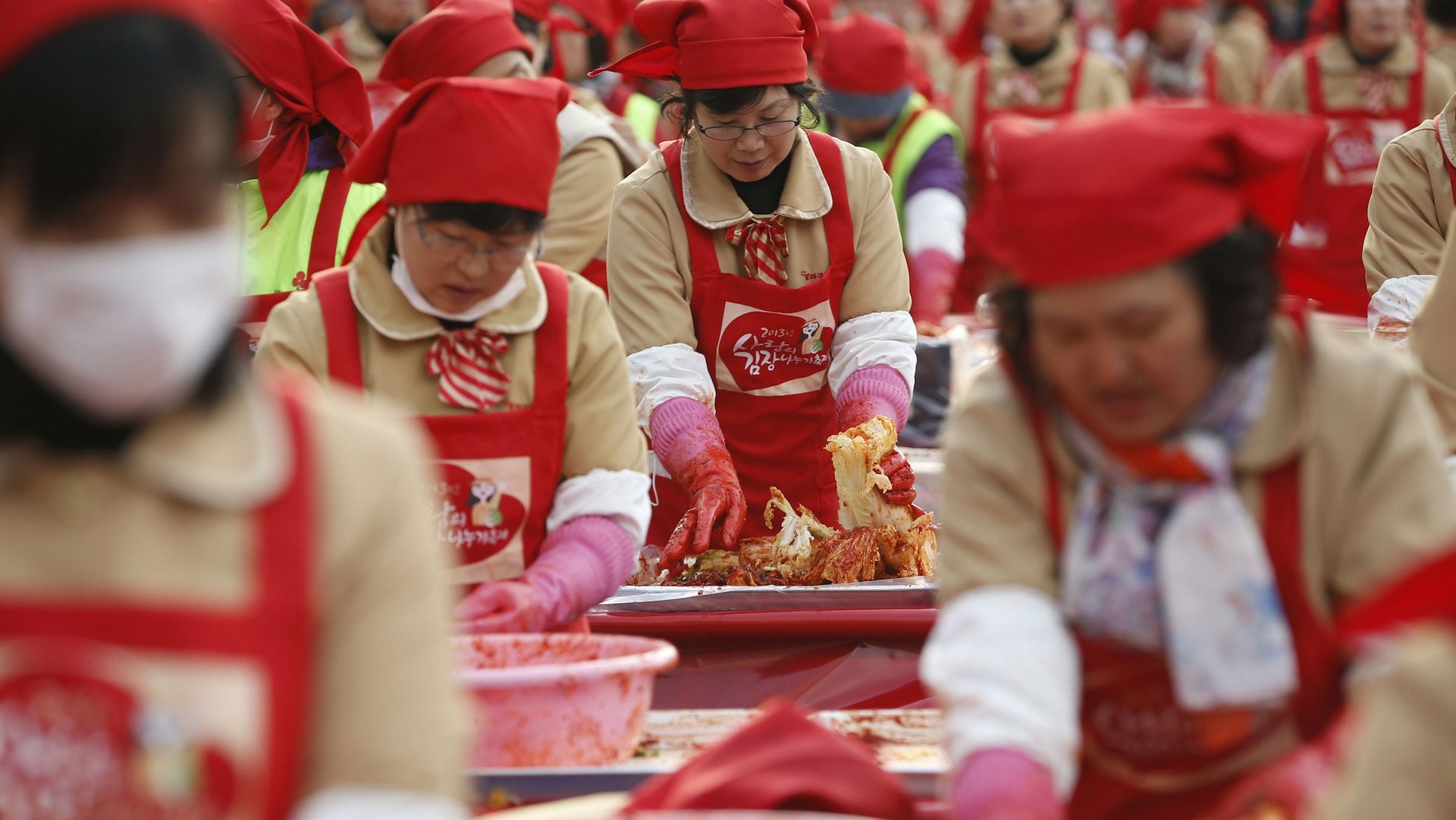From kimchi to Azerbaijani polo—what is humanity’s “intangible cultural heritage,” anyway?
Making kimchi, the abacus, Mongolian calligraphy, traditional Japanese cuisine, and an Azerbaijani horse game, chovqan—these are a few of the things UNESCO has just deemed important enough to be part of humanity’s “intangible cultural heritage.”


Making kimchi, the abacus, Mongolian calligraphy, traditional Japanese cuisine, and an Azerbaijani horse game, chovqan—these are a few of the things UNESCO has just deemed important enough to be part of humanity’s “intangible cultural heritage.”
“Intangible” is the operative word here. Critics say UNESCO’s identification of important art and cultural traditions from around the world—some of which, like Mongolian calligraphy and chovqan, are deemed in need of “urgent safeguarding”—is a vague and subjective practice. Supporters of UNESCO’s cultural preservation efforts say the benefits of these practices are hard to quantify, but that they promote pride in one’s community and diversity.
UNESCO, a branch of the United Nations, started compiling lists of culturally-important practices and items in 2008; it has named more than 200. A committee drawn from the 157 signatories to the Intangible Cultural Heritage (ICH) convention choose the list’s entries every year. (Here’s a list of all 17 new entries, as well as UNESCO’s entire collection of culturally-important items.) There are some glaring omissions—nothing comes from the US, Canada or Australia, because these countries haven’t signed the “intangible” convention.

There are some rather broad entries, like the “Mediterranean diet,” that seem hard to protect, and others, like “celebrations of big shoulder-borne processional structures,” that seem downright silly. One of the more obscure traditions highlighted by UNESCO is a Corsican polyphonic chant.
UNESCO largely leaves it up to individual countries and communities to decide how to protect these items after they have been named. There is little to stop winners from milking the publicity of the UNESCO designation without actually protecting said cultural tradition.
After the 2010 addition of French cuisine to the UNESCO list, for example, critics said high-end French chefs used the title for self-promotion instead of protecting the traditional family meal. In 2011, the French hotel and restaurant group Relais & Chateaux dinner threw a lavish $1,270-a-head dinner in honor of French cuisine at Palace of Versailles that many considered a huge publicity stunt featuring average food. French chefs recent embrace of frozen produce (paywall) and canned ingredients indicates that the “intangible” designation has done little to protect the integrity of the cuisine itself.
But what the list does accomplish is giving easily overlooked customs international attention and prestige (like the mesmerizing Azerbaijani horse-riding game, which looks a bit like polo set to folk music). And not all have given up on the designation’s potential power to encourage greater protection of cultural heritage. Supporters of adding “traditional dietary cultures of the Japanese” to the list, for example, believe it can help stem the increasing Westernization of Japanese diets—a trend that’s made the country more dependent on imported foods rather than locally sourced fish and pickled vegetables. Now that would make for a tangible benefit.